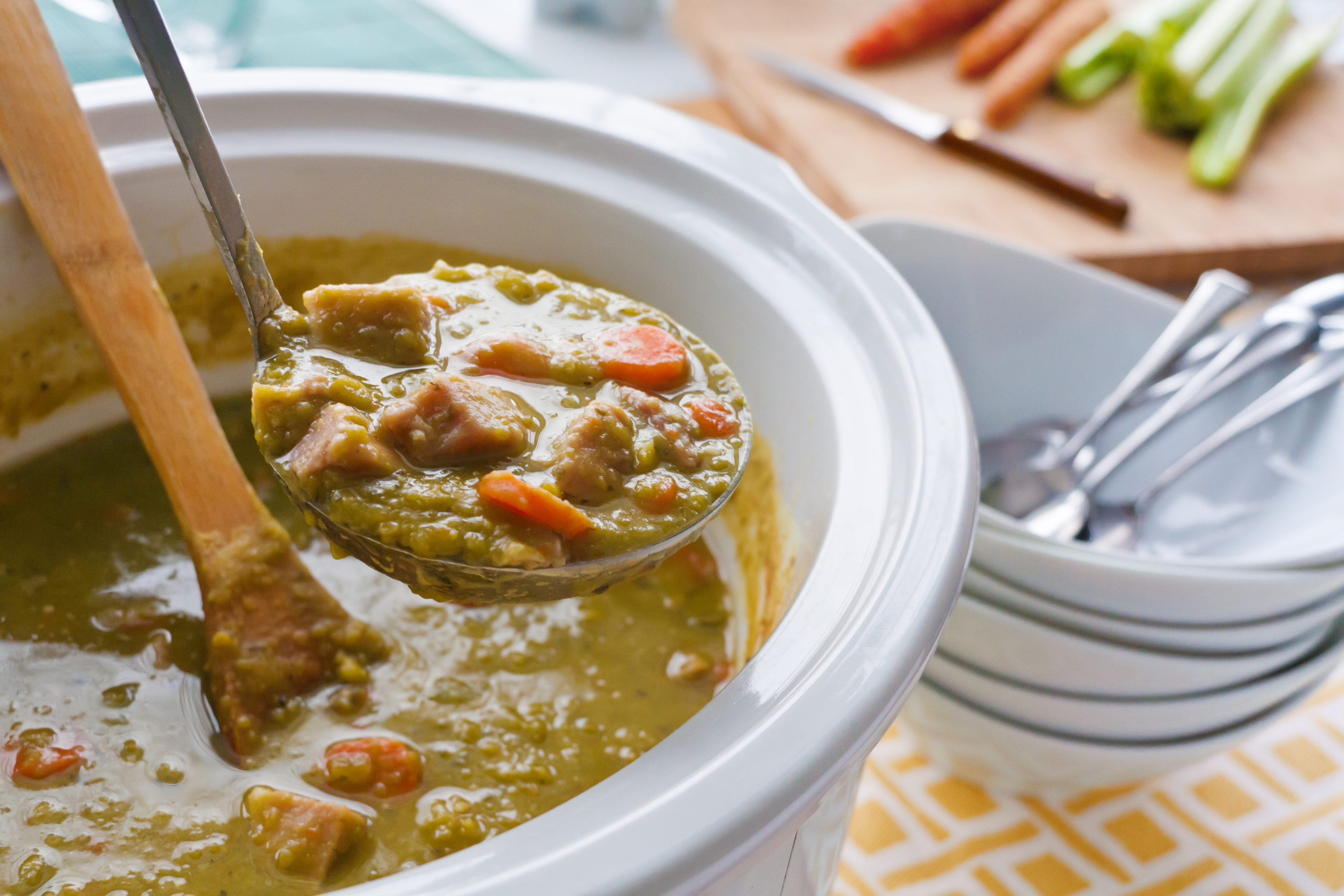There’s no denying the convenience factor of a slow-cooked meal that just takes a few minutes of preparation, cooks all day while you’re busy living your life and then is ready when you need a hot dinner. Whether you are using the slow cooker mode on your Instant Pot or the trusty slow cooker you’ve had for years, it’s important to keep food safety in mind. After all, the food is cooking “low and slow” a long time, and then often waiting for you on the “keep warm” setting for a while—there is potential for bacteria to multiply to dangerous levels if good food safety practices are not employed.

As author of a couple of slow cooker cookbooks, and having used a slow cooker since I was in college, I’ve had my share of experience with these machines. Here are my top tips for keeping your slow cooked food safe to eat:
Handle the crock insert carefully.
Since the removable crock part of most slow cookers is stoneware, it’s clearly important not to knock it against the counter or handle it roughly since it can crack or chip (and if it has a crack or chip, it’s best to replace it since that’s a weak spot that can crack further during cooking and leave you with a giant mess). To minimize damage to the crock, allow it to cool completely before washing it (either by hand or in the dishwasher). Most are dishwasher safe but check the manual to see what the manufacturer recommends. If you really need to scrub the crock, let it soak in warm water first, then use a plastic scouring pad.
Avoid exposing the crock to sudden temperature changes.
Cracking can happen when stoneware is exposed to extreme or sudden temperature variations. So, don’t add frozen meat or other frozen ingredients to a hot crock—let them come up to room temperature ahead of time or heat them briefly in the microwave to take the chill off. Also, avoid adding boiling hot food or ingredients to a chilled crock.
While we’re talking about temps, putting ingredients into the crock the night before and then refrigerating the entire thing overnight might seem like a genius idea, but it is generally not recommended—when the chilled crock starts to heat up it can crack. Also, it may cause the ingredients to spend too long in the “danger zone” of temperatures that encourage bacteria to multiply—in other words, if the food doesn’t heat up fast enough, food poisoning may be more likely. Instead of chilling everything together, simply put the ingredients into plastic baggies or containers to chill, then add them to the crock just before turning it on (it’s the chilled crock/hot temp issue you’re trying to avoid).
Never try to cook food on the “warm” setting.
This setting is there to help keep your food warm after it’s thoroughly cooked—not to cook the food. Use the cooking settings to actually cook your food (see the manual for instructions for your machine).
Don’t take the cover off during cooking unless you absolutely have to.
Every time you remove the lid from the slow cooker during cooking, the temperature drops about 15 degrees and the entire cooking process can be slowed dramatically. Stir if you need to, but otherwise let the machine do its magic undisturbed.
Take care of leftovers soon after eating.
Letting food sit in the slow cooker for hours once it is cooked does not allow the food to chill down fast enough to contain bacterial growth. Putting a still-warm crock into the refrigerator is also a no-go for a couple reasons: it could crack as discussed above, or, depending on how much food is in the crock, the food may not chill down fast enough to prevent bacterial growth. So if you have a big pot of stew or soup for example, it’s best to eat your meal, then immediately transfer the leftovers to a shallow container (or multiple containers) and refrigerate or freeze those leftovers right away. This will ensure that the food chills down quickly instead of hovering in an unsafe zone for too long. It’s common food safety practice with all food, not just slow-cooked food.
Buy and use an “instant read” thermometer.
Instant read thermometers are easy to use, inexpensive and widely available. Slow cooked recipes will specify the time needed to cook the dish, but it’s a good idea to check temperatures for things like roasts, chops, chicken pieces or whole birds and ground meat dishes like meatloaf. This is especially important if you are not cooking at the specified temperature or setting called for in the recipe. For example, you may want to cook your chicken breasts slower than the recipe specifies (usually this is fine to use the Low setting instead of the High setting, and just cook the food longer), but if you’re not sure exactly when they will be done, you’d check them with your instant read thermometer (insert thermometer into the thickest part of the meat). The thermometers often have the safe temps marked right on them, or use these general guidelines (see this USDA temperature chart for more information):
- Roasts and steaks: 145-160ºF
- Ground meat: 160ºF
- Pork roasts and chops: 160ºF
- Whole bird/ground/poultry pieces: 165ºF
For additional slow cooker food safety tips and general advice for using a slow cooker, check out this University of Minnesota Extension service website and these general tips from the USDA.